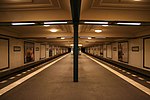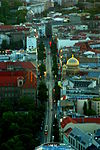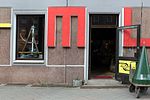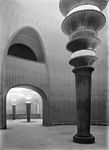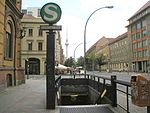Kunsthaus Tacheles

The Kunsthaus Tacheles (English: Art House Tacheles) was an art center in Berlin, Germany, a large (9,000 m2 (97,000 sq ft)) building and sculpture park on Oranienburger Straße, in the sub-neighborhood of Spandauer Vorstadt in the Mitte district. Huge, colorful graffiti-style murals were painted on the exterior walls, and modern art sculptures were featured inside. The building housed an artist collective from 1990 until 2012. Originally called Friedrichstraßenpassage, it was built in 1907–1908 as a department store in the Jewish quarter (Scheunenviertel) of Berlin, next to the synagogue. During World War II it served as a Nazi prison for a short while. Under GDR authorities it was later partially demolished. After the Berlin Wall had come down in 1989, it was taken over by artists, who called it Tacheles, Yiddish for "straight talking". The building contained studios and workshops, a nightclub, and a cinema. Outside, the garden featured an open-air exhibition of metal sculptures as well as galleries and studios for sculptors and painters.
Excerpt from the Wikipedia article Kunsthaus Tacheles (License: CC BY-SA 3.0, Authors, Images).Kunsthaus Tacheles
Oranienburger Straße, Berlin Mitte
Geographical coordinates (GPS) Address External links Nearby Places Show on map
Geographical coordinates (GPS)
| Latitude | Longitude |
|---|---|
| N 52.525555555556 ° | E 13.388611111111 ° |
Address
ehem. Kunsthaus Tacheles
Oranienburger Straße 54-56A
10117 Berlin, Mitte
Germany
Open on Google Maps
